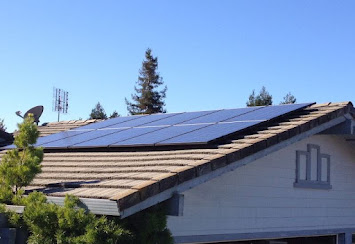The Growing Importance of Energy Storage in a Renewable-Powered Future
As the global push toward clean energy accelerates, one critical technology is emerging as a linchpin in the transition: energy storage. From residential solar installations to national power grids, energy storage systems are playing an increasingly essential role in ensuring reliable, efficient, and sustainable power supply. As more countries invest in renewable energy sources like solar and wind, the ability to store excess energy and release it when needed is becoming not just beneficial, but absolutely vital.
Why Energy Storage Matters
Renewable energy sources are inherently variable. Solar panels only generate electricity when the sun shines, and wind turbines rely on wind conditions. This variability creates challenges for energy grid operators who must balance supply and demand in real time. Without adequate energy storage, surplus energy generated during peak production times is often wasted, and shortfalls during low production periods must be compensated with fossil fuel-based generation.
Energy storage provides a solution to this problem. By storing excess energy and releasing it when production is low or demand is high, these systems help stabilize the grid, reduce reliance on fossil fuels, and enhance the resilience of power infrastructure.
Types of Energy Storage Technologies
There are several different types of energy storage technologies, each suited to specific applications and timescales:
- Battery Storage: Lithium-ion batteries are currently the most popular form of energy storage, especially for residential and commercial solar systems. They are efficient, scalable, and capable of responding quickly to changes in power demand. Other types of batteries, such as flow batteries and solid-state batteries, are also gaining attention for their long-duration storage potential.
- Pumped Hydro Storage: This is the most established large-scale storage method, accounting for the majority of global energy storage capacity. It works by pumping water uphill to a reservoir during times of surplus electricity and releasing it through turbines when electricity is needed.
- Compressed Air Energy Storage (CAES): This system stores energy by compressing air in underground caverns or tanks. When energy is required, the compressed air is released, heated, and used to drive turbines.
- Thermal Energy Storage: These systems store energy in the form of heat. Molten salt is commonly used in solar thermal plants to retain heat for electricity generation after the sun sets.
- Flywheel Storage: These mechanical systems store energy in the rotational motion of a spinning flywheel. They are ideal for short-duration energy storage and applications requiring rapid response times.
Applications and Benefits
The applications of energy storage are broad and growing:
- Grid stabilization: Energy storage helps maintain consistent voltage and frequency levels, supporting the integration of variable renewables into the grid.
- Peak shaving: By discharging during peak demand periods, storage systems reduce the need for utilities to activate expensive and polluting peaker plants.
- Backup power: For homes, businesses, and hospitals, energy storage can provide power during outages and emergencies.
- Energy arbitrage: Businesses can store energy when it’s cheap and use or sell it when prices are high, optimizing their energy costs.
Energy storage also contributes to environmental goals by enabling higher penetration of clean energy, reducing carbon emissions, and minimizing the need for fossil-fuel-based peaking power plants.
Challenges Facing Energy Storage
Despite its benefits, the widespread adoption of energy storage faces several challenges:
- Cost: Although prices have dropped significantly, especially for lithium-ion batteries, energy storage can still represent a significant investment.
- Lifespan and degradation: Some storage technologies degrade over time, leading to reduced capacity and efficiency.
- Regulatory barriers: In many regions, policies and regulations have not caught up with the pace of innovation in energy storage.
The Future of Energy Storage
The outlook for energy storage is extremely promising. According to various industry forecasts, global storage capacity is expected to grow exponentially over the next decade. Innovations in battery chemistry, such as solid-state and sodium-ion batteries, promise greater efficiency and safety at lower costs. Simultaneously, software improvements in energy management systems are optimizing storage performance and integration.
Governments and private investors are also ramping up support. Initiatives like the U.S. Department of Energy’s Energy Storage Grand Challenge and the EU’s Battery Alliance signal strong political will to scale up storage infrastructure.
Conclusion
In the clean energy landscape, energy storage is more than just a support technology — it is a cornerstone of a sustainable and resilient power system. By enabling the efficient use of renewable energy, stabilizing electricity grids, and reducing our dependence on fossil fuels, energy storage is powering a future where clean energy is not only possible but practical and reliable.
Call (866) 926-9997 or email sales@highlightsolar.com.



Comments
Post a Comment